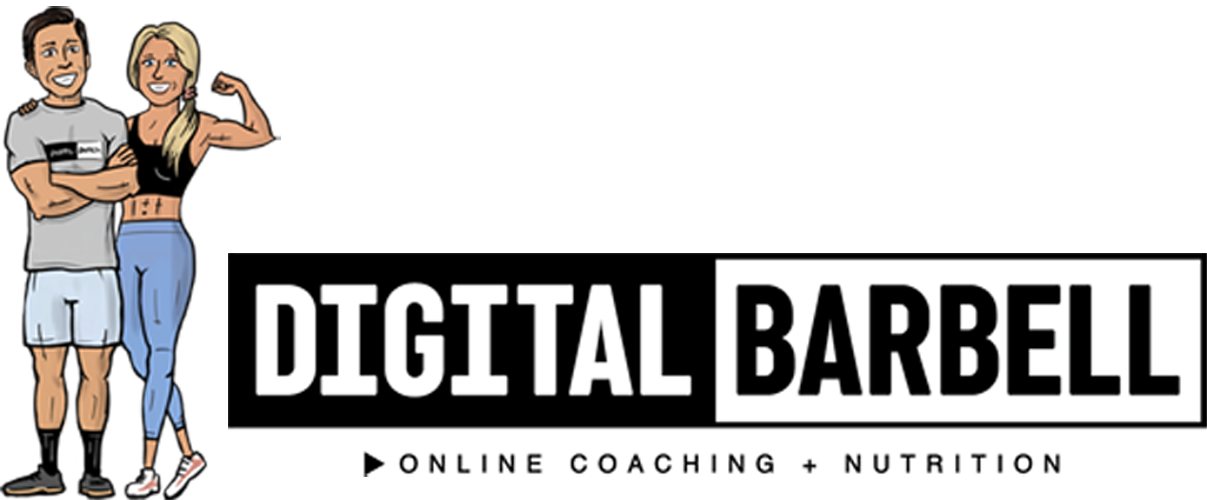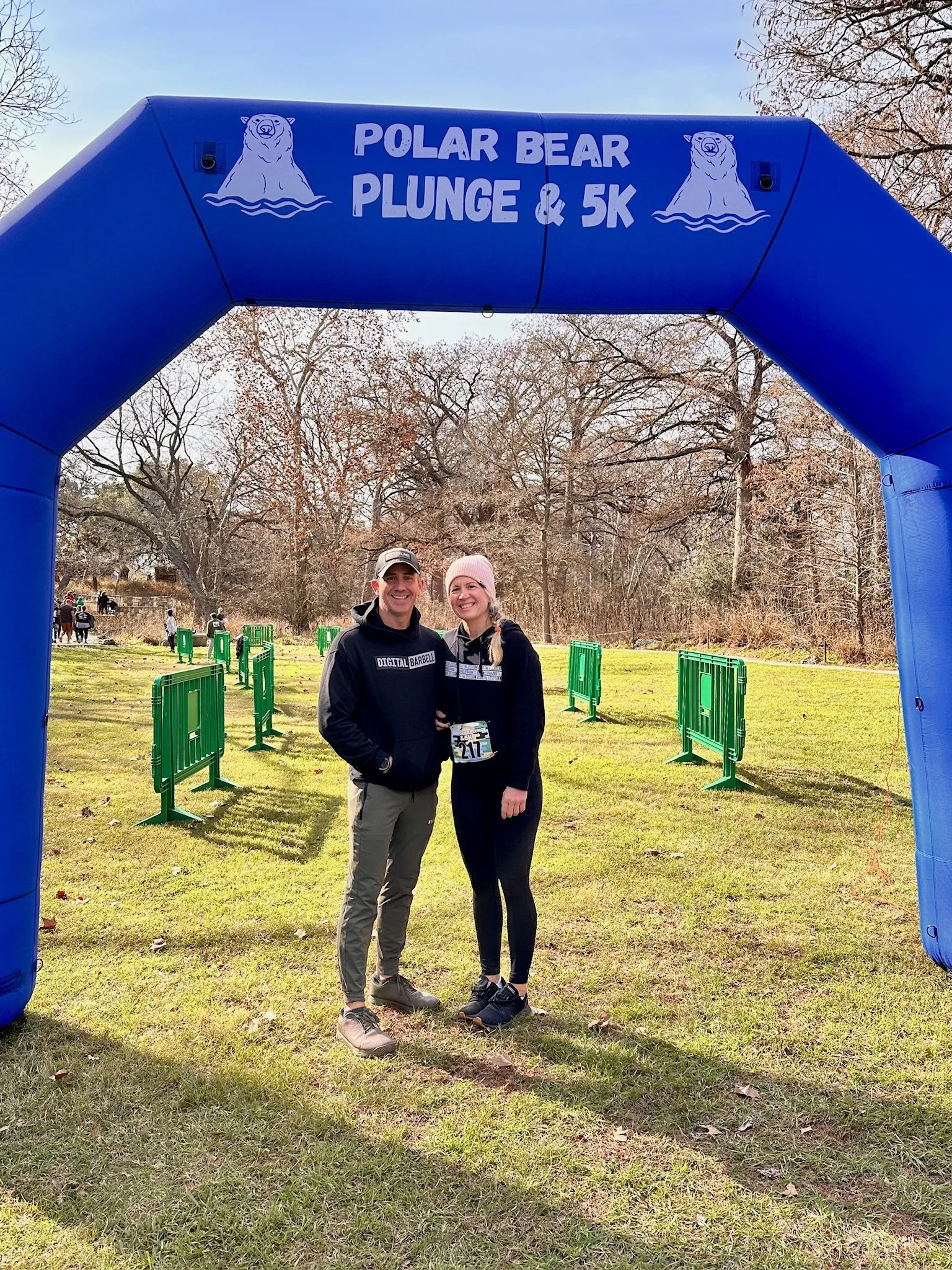Running Knee Pain, Metabolism Over 40, How To Overcome Weight Loss Plateaus
When it comes to fitness, we all have questions that keep us stuck or leave us second-guessing our progress. In this post, we’ll tackle six common fitness dilemmas, giving you actionable advice to move forward confidently.
These questions came from our Podcast listeners, and these are the notes from the episode where we answered them. You can listen to the episode on Apple, Spotify, or YouTube.
Before we begin… Do you work out but not really look like it? To fix the problem you’ve probably tried:
Doing more workouts
Switching programs
Adding extra cardio like running and biking
Cutting out carbs
Eating cleaner
Burning more calories
Getting more steps
Eating less calories
None of it has worked, and it’s completely frustrating.
We’ve coached hundreds of people over the last 13 years, and we’ve identified the 10 reasons why you’re working out but don’t look like it. We’ll email you every day for 10 days telling you why what you’ve done hasn’t worked, and what to do instead.
Just click the button below and we’ll get started!
Ok, back to the questions!
1. How Can I Prevent Knee Pain While Running?
The question was: “When I run, I get a pain on the outside of my knee after about a mile and half. Anything I can do to prevent it?”
If you feel a sharp pain on the outside of your knee after running a mile or so, it could be due to your iliotibial (IT) band. This common issue happens when your body isn’t yet adapted to the stress you’re placing on it.
Here’s how to fix it:
Warm up properly: Start with a slow jog of about 800 meters before you pick up the pace.
Scale back the distance: Reduce your mileage for now, but increase your running frequency to build tolerance. Run shorter distances more times per week, or break your running up into two sessions on the same day.
Progress gradually: Slowly increase your running distance week to week to approach your previous threshold without hitting the pain point.
Strength train: Add exercises like squats, lunges, and deadlifts to strengthen your lower body and improve stability.
💡 Pro tip: Don’t waste time stretching / foam rolling your IT band – it’s unlikely to make a significant difference. Instead, focus on gradual progression and strength-building.
Jonathan & Blakley
Run a 5k, then jump in the freezing water? Why not?!?!
2. How To Know If My Workout Program Is Working?
The question was: “How do I know if my workout program is working?”
Success starts with defining your goals and measuring progress against them. Whether you’re training for performance, strength, or aesthetics, clarity is key.
Here’s how to track results based on your goal:
Performance: Pick 1–2 benchmarks (e.g., a 5K run, a workout like “Grace,” or a handstand hold) and retest every three months.
Strength: Track your progress on 2–3 key lifts by testing rep maxes or personal bests every 8–12 weeks.
Physique: Use progress photos, measurements, or a “goal outfit” to assess changes in your body composition.
💡 Call to action: Need help structuring your goals and tracking progress? Let Digital Barbell guide you with a personalized plan.
Using Side By Side Photos To Measure Progress
Use the same lighting and location when possible
3. Why Am I Not Losing Weight, Even Though I’m Eating Healthy?
Questions: “I feel like I’m eating healthy, but I’m not losing weight. How do I know if I’m eating the right amount?” & “I’ve been stuck at the same weight since Thanksgiving, even though I’m working out and eating better than I ever have. What could I be doing wrong?”
This is a common frustration, but “eating healthy” doesn’t always mean eating in a calorie deficit, which is required for weight loss. If the scale hasn’t budged, here’s how to troubleshoot:
Check for progress beyond the scale: Take photos, measurements, and pay attention to how your clothes fit.
Dial in your intake: Go from “eating better” to knowing exactly how much you’re eating by tracking your calories and macros, or by going from estimating your portions to weighing them precisely. If you don’t want to track calories, consider hiring a coach to look at your diet.
Tighten habits: If your portion sizes or snacking have crept up, it’s time to reel them back in. If you’ve started grabbing mindless bites or kids leftovers, bring awareness into the equation.
Increase activity: If you’ve been averaging 5,000 - 7,000 steps per day, aim for more. Small increases in daily movement (NEAT) can make a big difference.
Decrease calories: If everything mentioned above is in check, lower your calorie intake by 5-10 % and wait 2-4 weeks to see how your body responds.
💡 Pro tip: Weight loss plateaus happen to everyone, but they’re not permanent. Adjusting your strategy with accurate tracking and consistent effort will get you moving again.
4. I’m Lifting Weights, But I’m Not Seeing Muscle Definition. What Can I Do?
The question was: “I’m lifting weights consistently, but I’m not seeing much muscle definition. What can I do to fix this?”
Building visible muscle definition takes time, patience, and consistency. If you’re not seeing the definition you want, here’s what to check:
Strength progression: Are you lifting heavier weights over time? To build muscle, your workouts need to include enough volume (sets and reps) and intensity (effort). They also need to include progressive overload that increases the weight you’re lifting gradually over time.
Fat levels: Muscle definition comes from having enough muscle and a low enough body fat percentage. Most people see muscle definition at around 12–15% body fat for men and 20–25% for women.
Exercise type: Be sure you’re doing exercises that actually build muscle, rather than just improving endurance by lifting light dumbbells, or doing exclusively cardio like running and biking.
Heavy Weights + Progressive Overload + Low Body Fat = Muscle Definition
5. How To Prevent Your Metabolism From Slowing Down
The question was: “Is My Metabolism Slowing Down After 40? What Can I Do About It?”
Good news. Your metabolism isn’t slowing as much as you might think. Your basal metabolic rate (BMR) – the calories your body burns at rest – only decreases by about 1–2% per decade due to hormonal changes.
For most adults, that’s only 100-200 calories per decade!
The real issue is lifestyle changes:
Muscle loss: Many people stop building or maintaining muscle as they age, which impacts metabolism.
Activity levels: As life gets busier, we often move less and lose out on calorie-burning opportunities.
Eating habits: Protein intake and purposeful eating often decline with age.
Here’s how to stay ahead:
Strength train regularly to build and maintain muscle.
Stay active throughout the day – every step counts!
Prioritize protein at every meal.
Manage stress to avoid hormonal disruptions and unhealthy coping mechanisms.
Here’s a free 5-week workout program you can start today:
Meet Digital Barbell Client Bernie
74 years young, and kicking butt
6. What Are the Best Exercises for Shoulder Development?
The question was: “In 2025 I want to focus on making my shoulders pop more. What are the best exercises to focus on?”
If you’re focusing on building shoulders that stand out, these exercises should be your bread and butter:
Dumbbell Press
Barbell Press
Dumbbell Lateral Raise
Cable Lateral Raise
Arnold Press
Bench Press
Upright Rows
Combine these with progressive overload (adding weight, reps, or sets over time) and make sure your form is on point for maximum results.
For video demos of all of these exercises on our YouTube Channel - Just CLICK HERE
Digital Barbell On YouTube
Find our podcast, client interviews, and hundreds of exercise demos
Final Thoughts
Whether you’re dealing with knee pain, chasing fat loss, or working toward superhero shoulders, the key is always consistency and patience. Stay clear on your goals, track your progress, and don’t be afraid to make adjustments when needed.
Ready to take the guesswork out of fitness? Click the button below to see our training program options.
Until next time… Lift heavy, and be nice!





